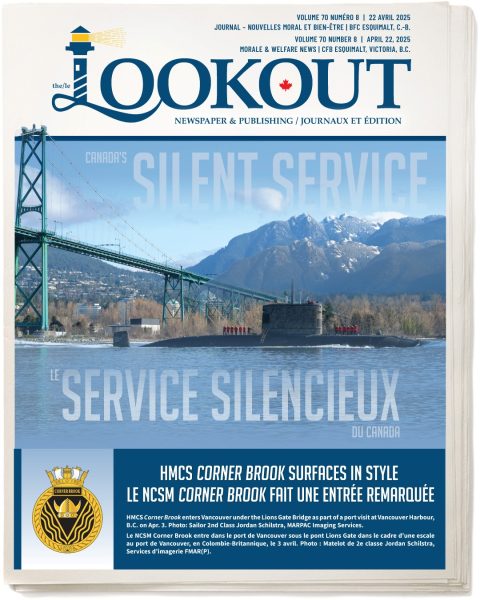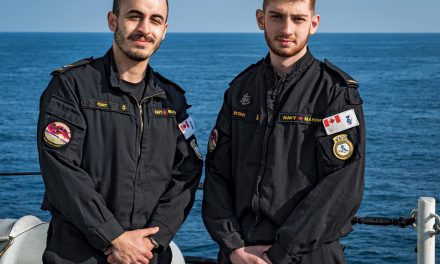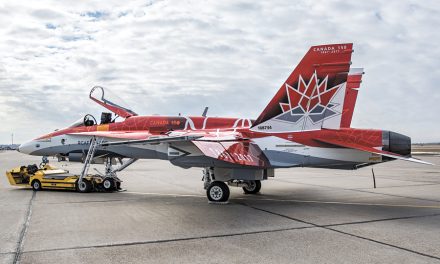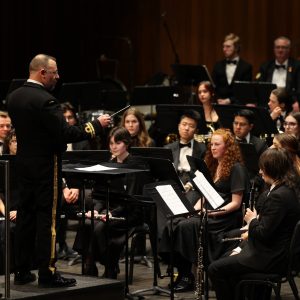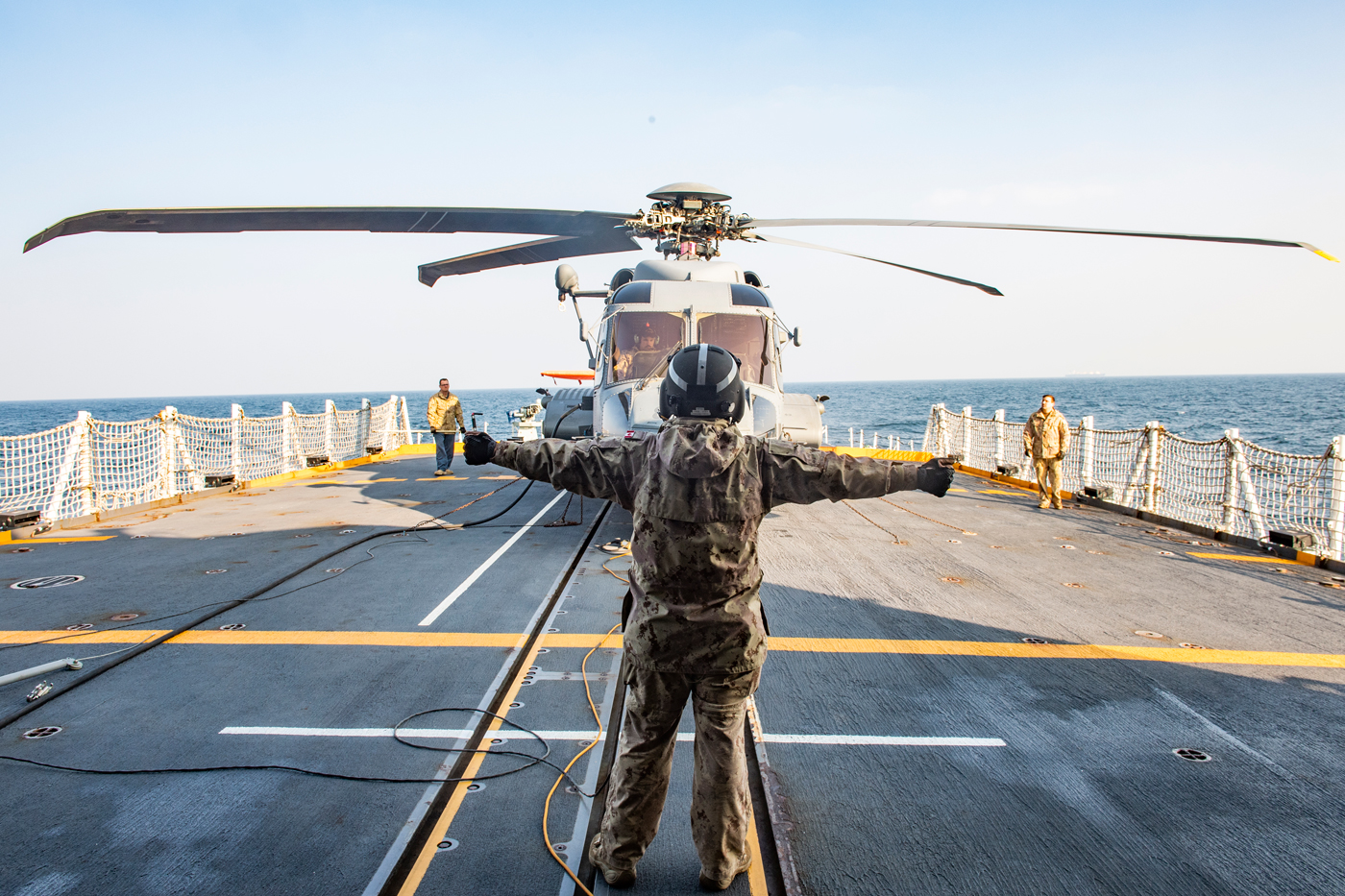
Members of the Helicopter Air Detachment spread the blades on Her Majesty’s Canadian Ship (HMCS) WINNIPEG’s CH-148 Cyclone helicopter on Nov. 13, in the East China Sea, during Operation NEON.
Photo by MCpl Andre Maillet, Maritime Forces Pacific Imaging Services
Capt John Jacob
HMCS Winnipeg
––
An embarked Helicopter Air Detachment (HELAIRDET) is a force multiplier for any Royal Canadian Navy ship going to sea.
The CH-148 Cyclone boasts an array of modern surface and sub-surface sensor suites and an integrated mission data management system that allows this maritime helicopter to excel in the modern battle space. Much like the multi-role maritime patrol aircraft, the CP-140 Aurora, it has the ability to conduct anti-surface, anti-submarine warfare, and search and rescue mission sets with cross-trained crews that can switch between these roles seamlessly in-flight.
HMCS Winnipeg has benefited from the flexibility and capability of their embarked Cyclone, call sign Guardian, during their deployment to the South Pacific on Operation Projection and Neon.
On Operation Neon, partner nations liaising through the Enforcement Coordination Centre in Japan conducted detection and deterrent operations of illegal ship-to-ship transfers in the South and East China Seas. This is in support of UN Security Council resolutions 2375 and 2397, observing sanctions to North Korea.
Operating over waters densely populated with maritime traffic, it is a concerted effort by all aircrew on board to process hundreds of vessels in the area, sifting out the few that require further investigation.
The use of the 360-degree Inverse Synthetic Aperture Radar allows the crew to routinely identify fishing vessels from cargo ships out to nearly 80 nautical miles. The Electro-Optic and Infrared turret then highlights visual references that narrow the identification to bulk cargo, container, or tankers. From the remaining vessels, closing to within a few miles allows for a clear look at their name, port of registry, and IMO number, allowing the crew to cross reference them against a list of established vessels-of-interest.
Upon finding a vessel-of-interest, especially one conducting a ship-to-ship transfer, the aircrew conduct a photo circuit a few hundred yards from the target, acquire information from radio communications, and take careful note of the features and traits of the vessel – passing this all on to the Enforcement Coordination Centre upon return to Winnipeg.
Following this process, Guardian was able to locate vessels-of-interest over 80 miles from Winnipeg, extending the collective mission effectiveness and contributions to this United Nations endeavour.
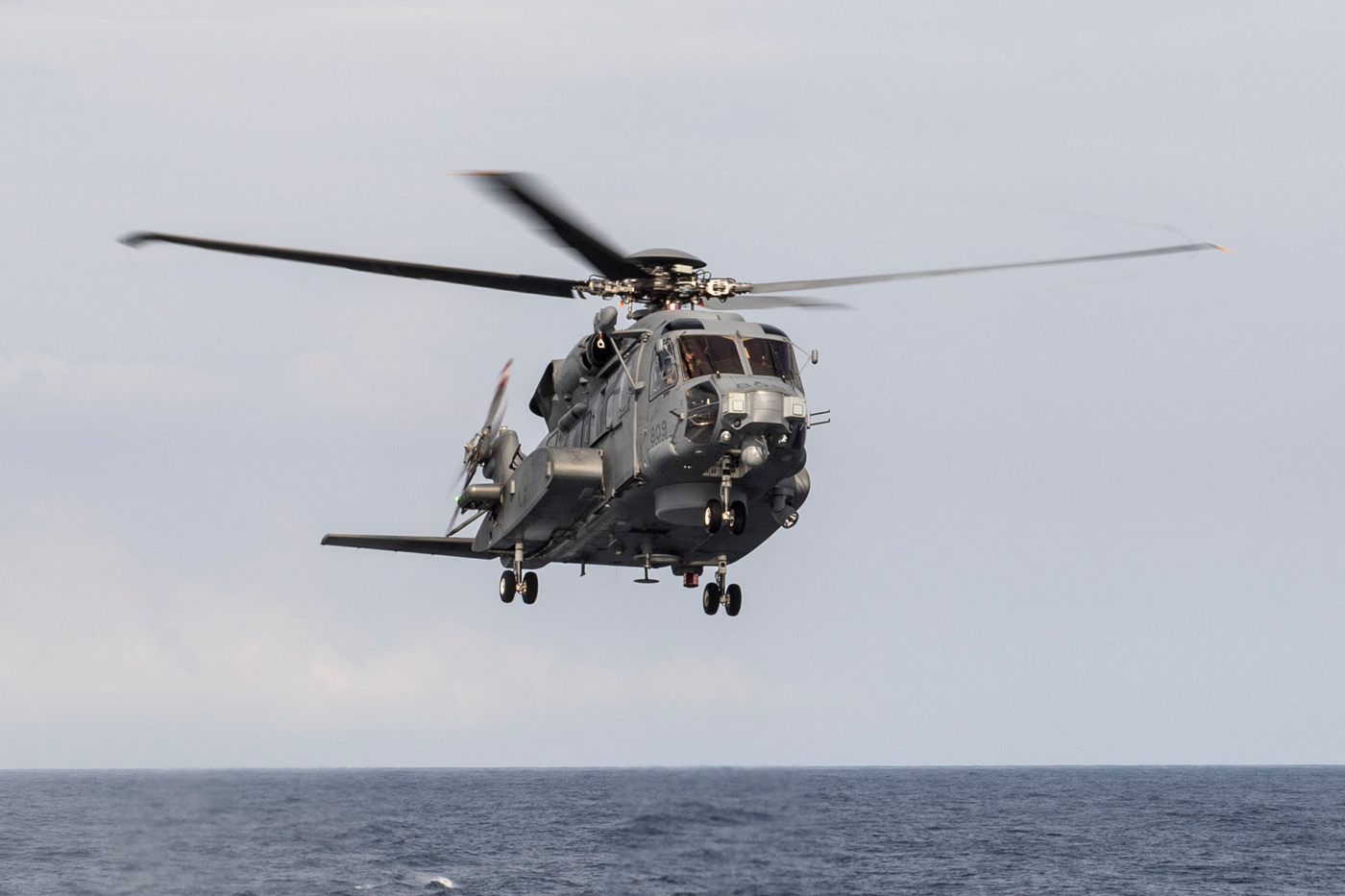
Guardian, Her Majesty’s Canadian Ship (HMCS) WINNIPEG’s embarked CH148 Cyclone Helicopter takes off over the Pacific Ocean on Sept. 15, during Operation NEON. Photo by MCpl Andre Maillet, Maritime Forces Pacific Imaging Services
Guardian also joined a multi-national flying program involving dozens of aircraft once Winnipeg joined the United Kingdom Carrier Strike Group. Contributing nearly 50 flying hours to the task group, Guardian used the skills honed during Op Neon to provide surface search and compilation results well beyond the horizon of the fleet. This provided early warning to the consorts of significant vessels in the area – both civilian and warship.
The electronic warfare capability on board the Cyclone is a major asset as it allows the helicopter crew to passively detect unique electromagnetic emissions to nearly 100 miles. With this information the crew can rapidly process and identify distant targets.
They are trained to handle mission re-taskings in-flight, and on a number of occasions were transferred to the anti-submarine warfare role, providing a screening capability to the fleet for sub-surface contacts outside their detection range.
The Cyclone routinely carries a standard load of passive and active sonobuoys with the ability to process up to 16 at once. It also possesses a powerful low-frequency tethered active sonar deployable in the hover. This enables the crew to seamlessly transition from a SSC to anti-submarine warfare mission when required.
A maritime helicopter rarely operates as an individual entity, and when embarked acts an extension of the ship’s force projection. Guardian is greatly enabled throughout this deployment by highly competent sensor operators and warfare officers on board Winnipeg. Providing the ability to relay real-time intelligence updates, process raw electronic warfare data, and reassure over-the-horizon operations by its stalwart operational presence, Winnipeg routinely bolsters Guardian’s tactical effects while airborne.
––––
